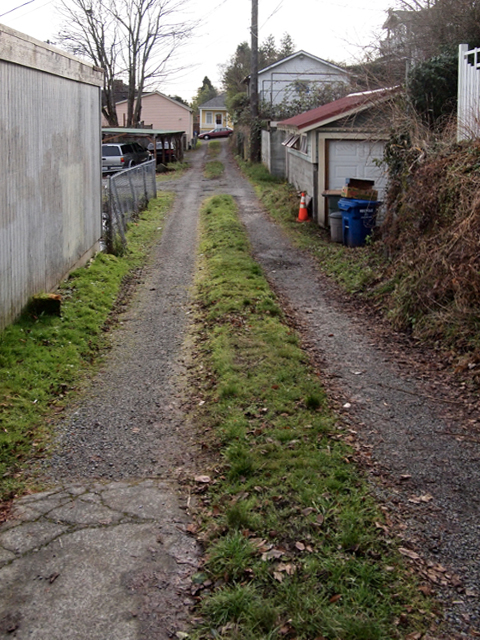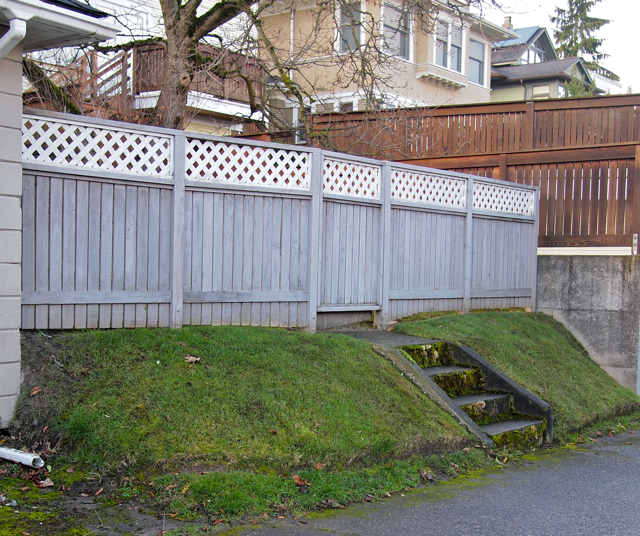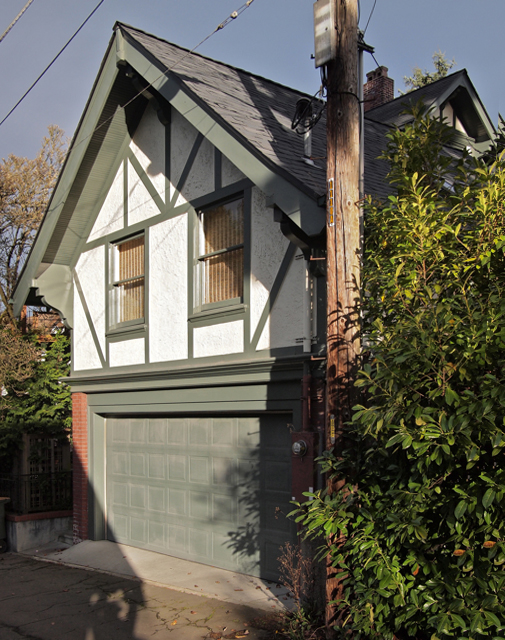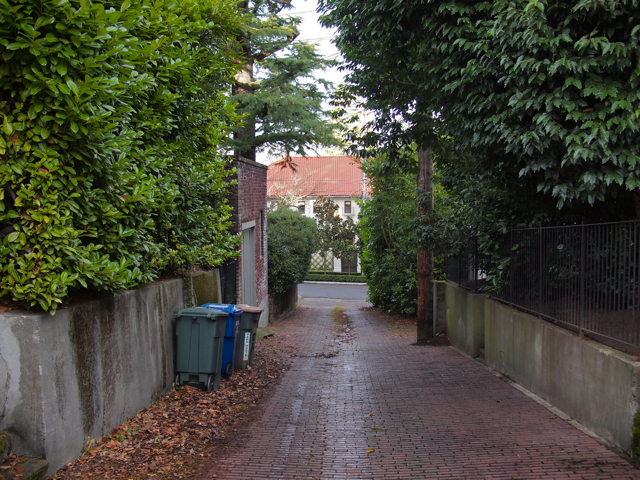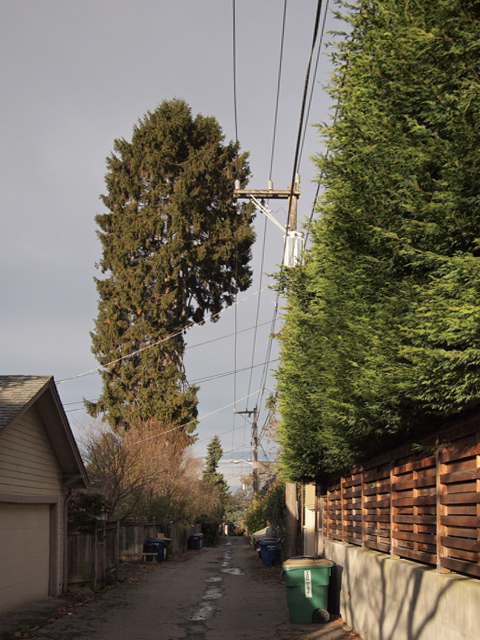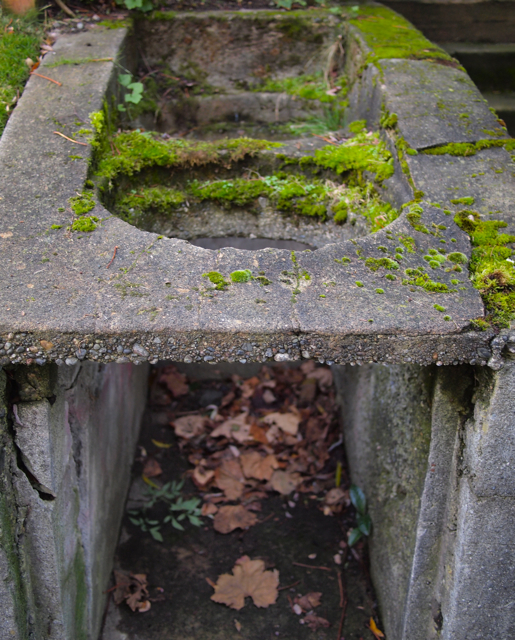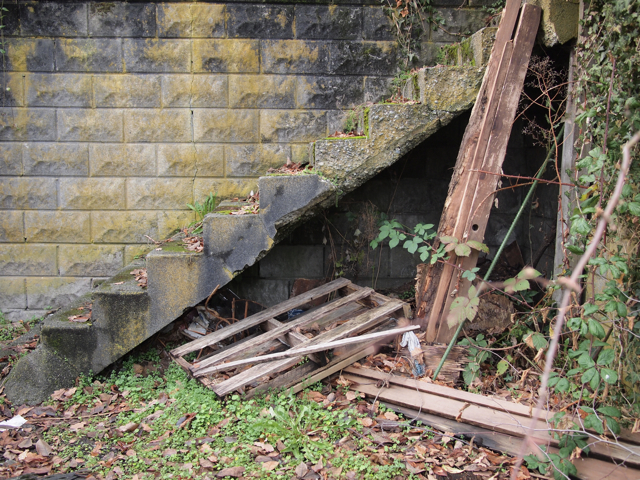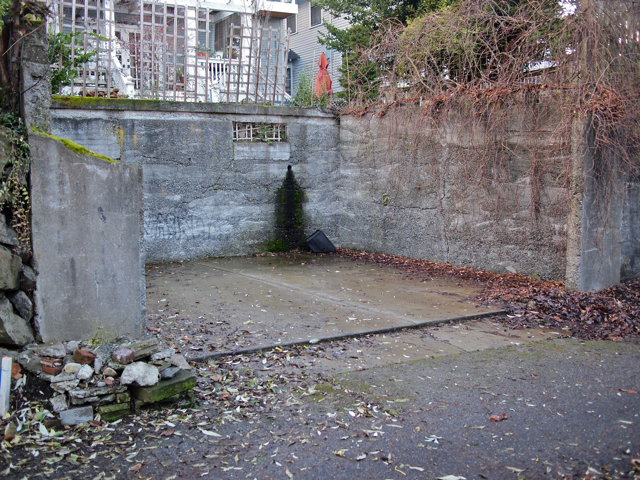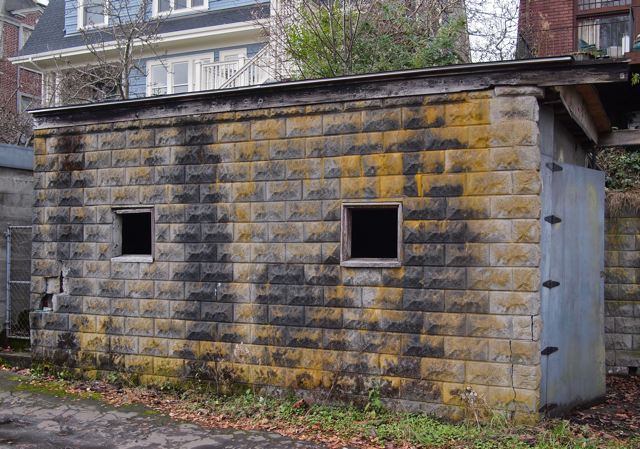On Capitol Hill, our alleys are linear. Stick straight, their linear nature defined by the walls and buildings that crisply define their edges. Though such definition is the typical case it is by no means the only one, as some alley- edges are defined not by a building or wall but only by a change in pavement type or by a shift from pavement to lawn. In such cases where there is no strict spatial boundary (i.e. wall or garage), the alley has an opportunity to usurp its linear heritage, and borrow from an adjacent space. Such expansion and contraction of the alley's typical spatial composition adds significantly to one's alley experience, adding yet another fruitful reason for exploration.
For apartment buildings, the transition space from alley to building often includes parking for vehicles, a totally reasonable use of such a space. At the non-alley side of the parking, one finds the apartment building which terminates this most basic of alley-space borrowing. The single-family residential portions of the Hill, on the other hand, can provide a more significant opportunity for the borrowing of space, as the often smaller-footprint single family house takes up less space than a mufti-family building. Such residences often have garages in their back yard. While such out buildings and walls often limit the extension of alley-space, they also frame the extension of space from the alley into an otherwise private realm.
A hybrid of the two above examples can be seen below. More urban in nature, this alley-extension has an unusual formality to it, attributable to the uniformity in the defining buildings' materials and their symmetrical lay-out. Though the fence makes it clear that the courtyard is private and not to be shared, its presence contributes to the spatial collage of the alley, lending it a more public ambiance.
Appearing to be carved out from the building, the porch/corridor combination/extension pictured below presents a rare, subtractive typology to the menu. In fact, the porch extension is wholly contained by the building within which it resides, allowing the alley to retain its crisp definition. The spatial ambiguity of this intriguing borrowing is enhanced by the narrowness of alley itself.
In isolation, the individual variations of each alley’s spatial characteristics is perhaps only mildly interesting. Taken as an ensemble and concentrated in one place, however, such variety gives unexpected richness to the alley-experience. Fortunately for us, we have just such an alley on the Hill, which I call Capitol Hill's secret alley. Why secret? It was at least to me. I have lived only two blocks from it for almost nine years and I just discovered it. Perhaps the more intrepid of us had already taken the plunge, but to me it was all a surprise, and all great fun.
Above, is the view of the alley that I had seen perhaps hundreds of times, and prior to this series, never felt the urge to delve into. From all appearances, it seems to be a straight connector from Roy street (between 19th and 20th Avenues), to Mercer Street. Very narrow, unpaved, not exactly inviting, and hardly likely to have much of interest. But this was a day for exploration, so I thought, why not?
Why not indeed! This is the view, mid-alley, looking back to Roy. What a surprise! Talk about borrowing space -- this alley leads into quite a variety spaces. Gardens, porches, and stoops -- wow. And so urban. In the gritty, well worn way that adds character to a city. Look at that foot path, what a great chronicler of use. And unique to this alley, no cars. An added bonus, for it allows portions of the alley to be extra narrow.
While hardly a piazza, the central space of this alley has a wonderful sense of enclosure that merits a visit. Similar to the examples above, the alley extensions here are private property, but their enclosing walls conversely make it feel more public (even though it clearly is not). In warmer months, with leaves on the trees and vegetables in the gardens, the experience must be even more satisfying. With a bit of polish (not too much, though) the above space would make a fabulous summer time terrace for dining or drinks, providing a nice addition to the Monsoon and Kingfish ensemble, one half a block over. Or, how about letting a warm summer day slip away, perched on the second floor balcony of the apartment building in the previous photo?
Looking north from Mercer, towards Roy, the southern portion of the alley has an even greater urban patina to it. The roughness of the masonry walls, the slight bend in the path, the bare utility of the steps. To the right one can see the tree and corner of the building pictured above, giving the slightest hint of the treasure that lies beyond, in Capitol Hill’s secret alley.









